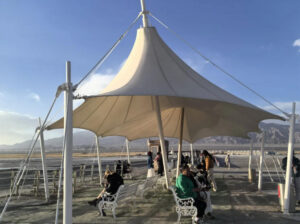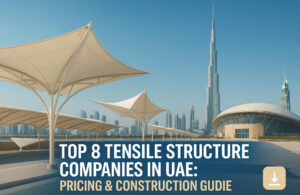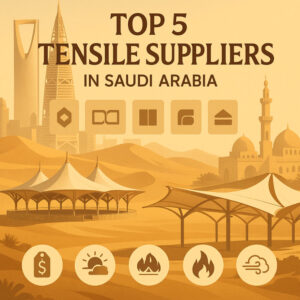Car parking has always been a necessity, but in today’s world—where electric vehicles (EVs) are becoming increasingly common—it has taken on new significance. Modern car parks must not only offer shelter from harsh sunlight and wind, but also serve as smart, multifunctional spaces that support EV charging infrastructure. This is where car parking shade structures come in. Designed to combine durability, aesthetics, and utility, these structures are now essential for both commercial and residential developments. In this article, I’ll walk you through the key features of car parking shade structures, explore the most popular designs in the market today, and help you understand how to choose the right solution based on your space, climate, and long-term needs.
Car parking has always been a necessity, but in today’s world—where electric vehicles (EVs) are becoming increasingly common—it has taken on new significance. Modern car parks must not only offer shelter from harsh sunlight and wind, but also serve as smart, multifunctional spaces that support EV charging infrastructure. This is where car parking shade structures come in. Designed to combine durability, aesthetics, and utility, these structures are now essential for both commercial and residential developments. In this article, I’ll walk you through the key features of car parking shade structures, explore the most popular designs in the market today, and help you understand how to choose the right solution based on your space, climate, and long-term needs.
Why Car Parking Shade Matters
Car parking shade structures have become an increasingly important part of modern infrastructure—whether in residential communities, shopping centers, office buildings, or public facilities. More than just a visual upgrade, these structures serve a practical and protective purpose that directly impacts vehicle longevity and user comfort.
One of the key reasons to install parking shade structures is protection from the elements. Prolonged exposure to sunlight can cause significant damage to a vehicle’s paint, dashboard, and interior temperature. UV rays accelerate material aging, while heavy rain, hail, or falling debris can damage windshields or body panels. A well-designed shade structure provides a safe, shaded environment that reduces heat buildup and minimizes weather-related wear and tear.
In residential areas, carports or covered parking spaces add both convenience and property value. For commercial spaces, such as malls, hospitals, and business complexes, shaded parking enhances user satisfaction and protects employee or customer vehicles throughout the day.
Additionally, many paid or ticketed parking facilities use car shade structures as a cost-effective solution to upgrade their service quality without major construction investment. Lightweight materials like tensile membrane or metal roofing allow for quick installation, scalability, and durability—all while keeping the structure visually appealing and low-maintenance.
In short, parking shade structures are no longer a luxury—they are a smart, essential feature in modern parking design.
Popular Car Parking Shade Designs
Modern car parking shade structures come in a variety of designs, each tailored to specific space requirements, architectural styles, and functional needs. Below are some of the most commonly used designs in commercial, residential, and industrial applications:
Cantilever Parking Shades
These are among the most widely used designs, featuring support columns on just one or both sides. This allows for maximum maneuverability and efficient use of space, making them ideal for areas with limited room, such as apartment complexes, office buildings, and hospital parking lots. Their clean structure also makes vehicle entry and exit easier.

Pyramid or Conical Shades
Designed with a central peak and sloped edges, these structures offer 360° coverage and excellent rain runoff, while also being visually attractive. They are commonly used in large-scale parking areas, such as shopping malls, airports, and stadiums.

Wave & Arch Tensile Shades
These are high-end options that use tensioned membrane fabric in artistic wave or arch forms. They provide both shade and architectural flair, often seen in luxury hotels, resorts, or premium commercial zones where aesthetics are a priority.

Sail Shade Structures
These lightweight, flexible canopies use overlapping triangular or rectangular fabrics to create dynamic, artistic effects. They are cost-effective and suitable for boutique venues, cafés, or small parking areas looking for both function and design.
Steel Roof Shades (Fixed or Polycarbonate)
Favored in industrial zones or government facilities, these robust structures provide long-term durability, low maintenance, and excellent weather protection. Polycarbonate panels also allow for natural light while blocking harmful UV rays.
Choosing the right design depends on the available space, budget, and desired visual impact.
Considerations When Choosing a Car Parking Shade
As we’ve seen in the various popular parking shade designs, each style comes with its own set of advantages depending on usage scenarios, aesthetics, and structural requirements. But to ensure your investment is both practical and long-lasting, it’s essential to evaluate several key factors before building or selecting a parking shade.
Site Dimensions and Layout
Start with the available space. A single-row residential setup will have different structural needs than a multi-lane commercial lot. Compact areas may benefit from cantilever structures that free up maneuvering space, while larger sites can opt for pyramid or wave-style systems that cover more vehicles with fewer posts.
Climate Conditions
If your location experiences strong sun, heavy rainfall, or seasonal storms, durability becomes critical. UV-resistant membranes, corrosion-resistant steel, and certified wind-load performance (e.g., 90–120 km/h) will ensure your structure stands the test of time—even in tropical or coastal areas.
Aesthetic Integration with Architecture
Shade structures should not only be functional but also visually cohesive. For example, combining a modern arch-type tensile canopy with EV charging stations enhances both the visual identity and user experience of the facility.
Budget vs. Long-Term ROI
Initial costs can vary widely, but long-term maintenance, visual appeal, and structural lifespan matter more. Investing in a high-quality design—especially with modular steel or membrane systems—often yields better ROI through increased durability and minimal upkeep.
By weighing these considerations carefully, you’ll be better equipped to choose a parking shade structure that’s safe, attractive, and cost-effective in the long run.
Real Case Example & Recommendations
A compelling example comes from a hospital in Johor, Malaysia. Facing extreme daytime heat and a growing demand for staff vehicle protection, the hospital management initially sought local tensile structure companies in malaysia to install a durable parking shade. They were particularly interested in structures that could both protect vehicles and aesthetically match the hospital’s modern architecture.

After comparing various suppliers and design solutions, they ultimately chose Jieol to complete the project. Jieol proposed a series of Pyramid/Conical PVC tensile membrane structures, covering more than 50 staff vehicles. These shades not only provided strong visual appeal but also delivered impressive functional results—interior vehicle temperatures were reduced by up to 15°C, enhancing user comfort and reducing energy usage for air conditioning.
The entire project was completed within eight weeks, from design to installation, meeting both safety standards and aesthetic expectations. For organizations seeking reliable, stylish, and effective parking shade solutions—especially in tropical climates—Jieol’s engineering experience and high-quality membrane materials make them a recommended partner.



